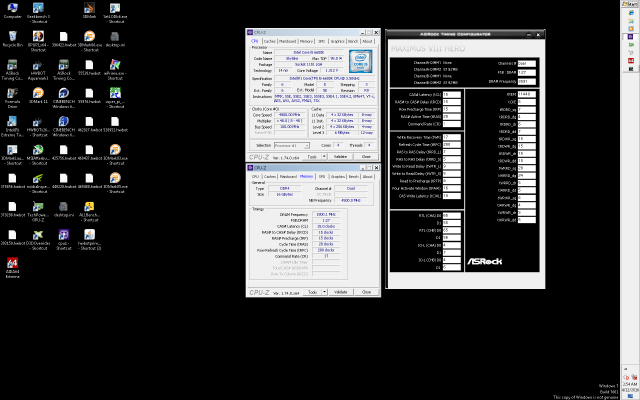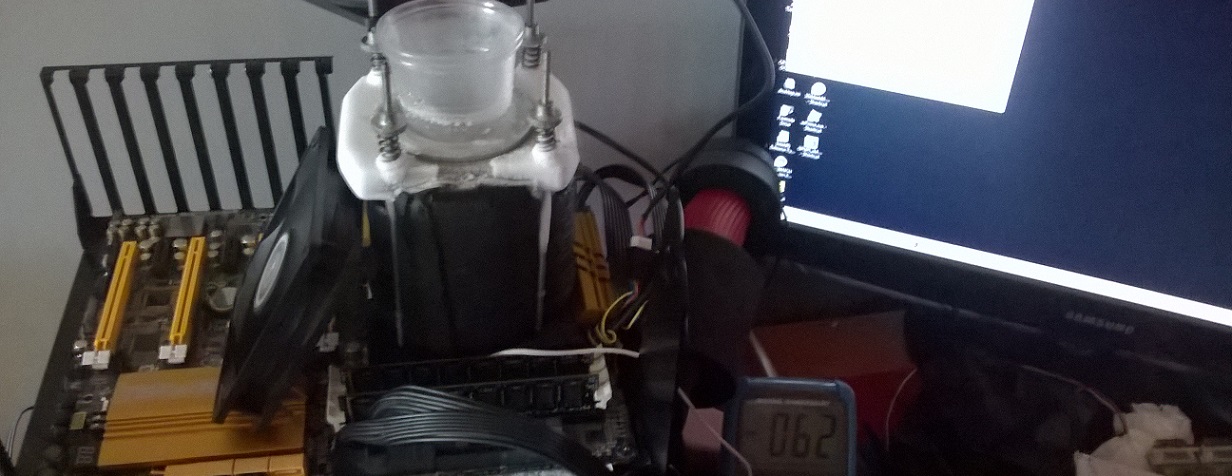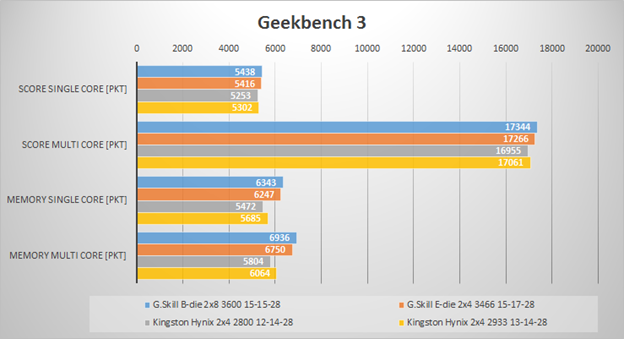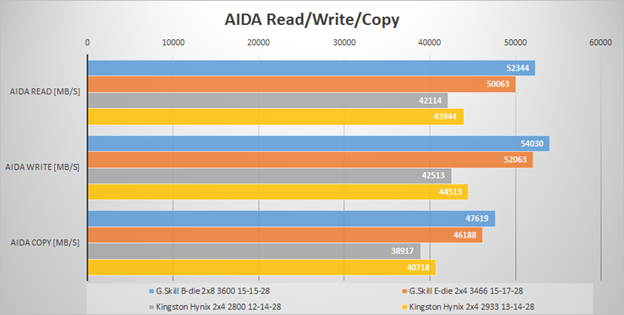This post is a second part in DDR4 on Z170 series. In previous part I covered the basic setup and baseline for tests. Here I will begin overclocking by raising memory voltage to 1.4-1.45 volts, which seems quite safe for 24/7 usage. In addition timing settings taken from XMP profile will be optimized and tightened.
Changes
Let me quickly summarize what changes in the memory settings:
| Memory | Original frequency | Original timings | Voltage | Optimized frequency | Optimized timings | New voltage |
| G.Skill TridentZ 3600C17 | 1800 MHz (3600 effective) | 17-18-18-38 2T | 1.35V | 1800 MHz (3600 effective) | 15-15-15-28 1T | 1.4V |
| G.Skill RipjawsV 3200C16 | 1600 MHz (3200 effective) | 16-16-16-36 2T | 1.35V | 1733 MHz (3466 effective) | 15-17-17-28 1T | 1.4V |
| HyperX Savage 2666C13 | 1333 MHz (1666 effective) | 14-15-15-35 2T | 1.35V | 1400 MHz (2800 effective) | 12-14-14-28 1T | 1.4V |
| 1466 MHz (2933 effective) | 13-14-14-28 1T | 1.45V |
In addition to main timings change as mentioned in the table above, subtimings were also optimized, including tightening of TCWL to 13 cycles, TRFC to 280 cycles and TRTP to 8 cycles. These settings are far more aggressive than default, although they are not still the tightest settings possible. Here’s the screenshot from the OS with TridentZ installed (most of the subtimings are identical for other sticks):

On to the tests:
XTU
Compared to previous results, we can observe dramatic result improvement in all cases. XTU is very sensitive to memory setting and optimizations made here cause ~8% increase in achieved results. Judging from experience, this is a difference of around 200-300 MHz core clock. What’s also interesting is that RipjawsV kit using older E-die is almost able to match its bigger brother and optimized HyperX will be better than much faster G.Skills on stock (XMP) settings.
Geekbench
In Geekbench results are similar – overclocked HyperX will catch stock G.Skills, but Samsung-based RAM will run away when optimized. Overall result is 200-300 points better than on stock.
AIDA
Starting with latency, we can see that the results are improving a lot. XMP settings on G.Skills gave latency measurements of around 43.5 ns and B-die based TridentZ gain 5 ns here, which is more than 10%. E-die also allows for improvement, but it’s substantially smaller, 2.5 ns and around 5%. Optimized HyperX again catch stock G.Skill.
The trend continues here as well, and we can see increases of 3-4 GB/s in memory bandwidth of G.Skill mems. This also shows how loose the default timings are, but we cannot expect that it will directly translate into 10% performance improvement. Unfortunately, operating frequency of HyperX mems is too low to let it spread its wings.
SuperPi 32M
SuperPi 32M shows some real performance improvement. B-die got down to 6:29 from 6:34, E-die – to 6:31 to 6:37 and MFR – to 6:33 from 6:40. Every second counts when fighting for optimal performance, but what we see here is that the test runs about 2% shorter.
This concludes first round of tests, where safe voltage of 1.4-1.45V is used. I was able to demonstrate how loose XMP timings are and what are possible gains in benchmarks. The real overclocking will start in next part, when I will raise voltage even more to 1.55V which in my opinion is just about maximum you could consider for 24/7 with proper cooling in your system.






Pingback: Comparing DDR4 IC on Z170 platform – part 3 – 1.55 volts, safe and brave :) – Phobos OC musings